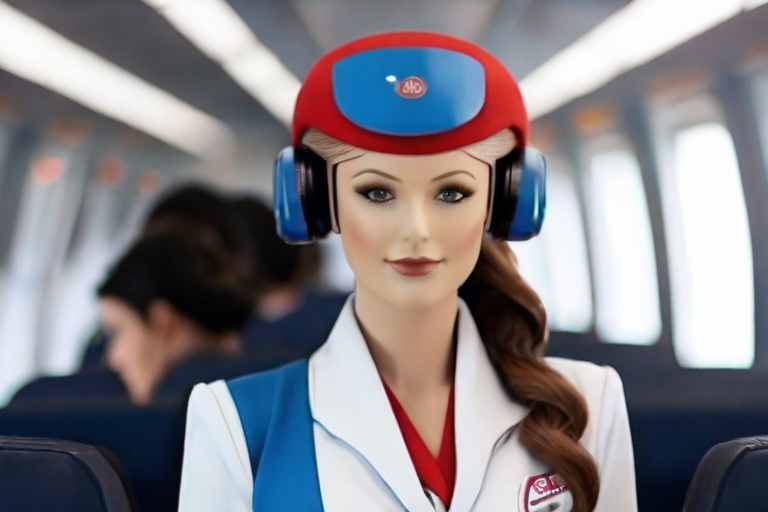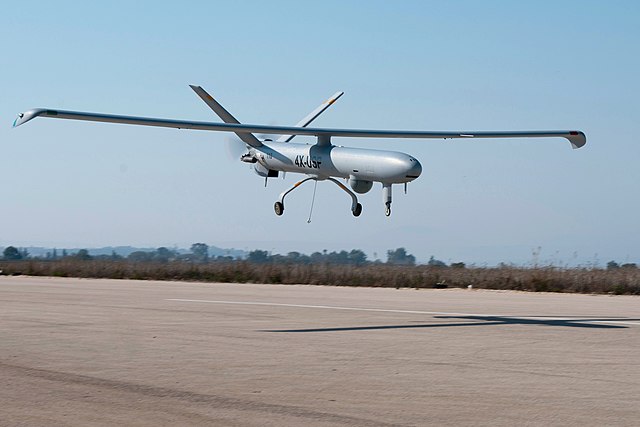
“I visualize a time when we will be to robots what dogs are to humans, and I’m rooting for the machines.”- Claude Shannon.
The effective utilization of Artificial intelligence is rapidly growing in almost every field of study nowadays, including the Aviation Industry. AI and its applications are redefining and remodeling our concepts as they can be used to paint an aircraft or remove paint from one. AI can also be used for the purposes of flying planes in war-affected regions, thereby limiting damage to pilots and aircraft in battles.
A.I. is not only a collection of algorithms designed to mimic human intelligence but also to master quantum, cosmos, and nature’s intelligence to turn any imagination into reality. It is a modern tool or technology that makes our lives easier, more effective, and more productive. It not only redefines flight operations but also elevates passenger experiences by ensuring maintenance and safety, and it also prompts contemplation of the ethical dimensions inherent in this technological advancement.
It has become a necessity for any airliner to adopt AI to survive in this competitive world to maintain a competitive position. AI elevates the passenger experience, providing comfort, convenience, and peace of mind.
The use of AI in various aspects :
1. Flight operations
The aviation industry is experiencing a profound shift, propelled by the extraordinary capabilities of AI. AI has emerged as a pivotal influence, redefining the navigation of aircraft through the skies within the domain of flight operations.

AI is playing a crucial role in redefining flight operations from the implementation of autopilot systems to the optimization of flight routes, the prediction of weather patterns, and the analysis of fuel efficiency. Autopilot systems equipped with AI algorithms have become invaluable co-pilots, offering precise control and stability during flights. By relieving human pilots of certain navigational tasks, these systems enhance safety and mitigate the risk of human error. As AI progresses further, its influence on flight operations will deepen, propelling the industry towards innovation and progress.
2. Health monitoring of aircraft systems
AI can help to continuously monitor the critical systems and parts of aircraft such as engines, motors, batteries, landing gear, avionics, and control systems. AI can detect any malfunctions or abnormalities, and take immediate actions to correct or inform the respective departments. Real-time monitoring system of AI helps to improve efficiency, reduce costs, and enhance safety. Thus, it helps to extend the lifespan of aircrafts.
3. Biometric identification
Biometric identification, a breakthrough in AI technology, streamlines check-in and boarding. By using fingerprints or facial recognition, passengers effortlessly verify their identities, eliminating traditional travel documents. This simplifies the journey, ensuring ease and convenience for passengers. It can identify suspicious behavior or objects in real-time and helps to catch potential threats.

4. Autonomous drones for inspections
Drones operated by AI with cameras and sensors can be used for visual inspections of aircraft’s exterior structures and areas that are hard to reach. They can capture high-resolution images and videos to analyze and detect signs of damage or other problems. AI-enabled drones can help to reduce inspection times and improve the accuracy of defect detection.
5. Designing and developing electric aircraft
AI can help to generate designs for innovative and efficient 3D structures that can maximize performance, reduce weight, and upgrade aerodynamic status. It can suggest design modifications to improve load-bearing capabilities and optimize the design of wings, fuselage, and other aerodynamic surfaces. Using simulations, AI can predict airflow patterns and drag forces and assist in designing advanced propellers to enhance propulsion efficiency and reduce noise levels.
6. Autonomous Flight Control
AI-enabled flight control systems can help the autonomy and safety of 3D electric aircraft by optimizing navigation, trajectory planning, and control mechanisms. It can help in autonomous takeoff and landing, and in emergency situations. It can identify potential failure modes, predict maintenance needs, and recommend safety measures. It can promote unmanned aerial vehicles (UAVs).

Elbit Systems Hermes-450 unmanned aircraft takeoff
7. Energy management
AI can assist in the energy management of aircraft by dynamically adjusting power distributions, propulsion settings, and other control systems to maximize range and efficiency. It can suggest energy-saving strategies to reduce energy consumption by analyzing flight data and weather conditions.
8. Virtual testing and simulation
AI can simulate how the aircraft responds to different real-time situations. Such as: aerodynamic forces, electrical loads and mechanical stress. This virtual test can help engineers to identify potential issues and can be aware of overall performance.
9. Management at the airport
AI systems can be used to optimize baggage handling efficiently. It can monitor passenger flows and provide solutions to manage crowds, reduce congestion and improve the environment of airports. It can mobilize energy consumption by monitoring and controlling lighting, cooling and heating systems based on information gathered by it. It can study previous data and predict flight delays to help passengers to formulate their timing and planning.

10. AI to minimize environmental impact by aircraft:
AI can help develop emission reduction strategies by analyzing engine performance data, combustion processes, and emissions control technologies. AI can minimize the release of pollutants such as carbon dioxide, nitrogen oxides, and other harmful matters to improve the quality of air.
It can lower the environmental footprint of aircraft by reducing fuel consumption and emissions, by reducing noise levels, and by suggesting new types of fuel that may be environmentally friendly, sustainable, more effective, and healthy. It can determine fuel-efficient flight paths, altitudes, and speeds based on various factors like winds, humidity, air traffic congestion, or any natural obstacles. It can greatly adopt green aviation practices.

A Pipistrel Velis Electro s/n 003 seatedon the top of a hill. AI can help optimize designs of electric aircraft such as these to reduce environmental pollution.
It can help design, test, and validate new advanced electric aircraft concepts that produce almost no emissions and noise compared to traditional jet engines. It can also guide decision-making processes to prioritize sustainable practices, green technologies, and eco-friendly solutions in aircraft manufacturing and plant design.
AI can ensure transparency in emissions disclosures and support the aviation industry’s transition towards decarbonization and sustainable aviation practices. This can be done by integrating environmental data, emission monitoring tools, and real-time responsive systems.
However, the integration of AI with the aviation industry is currently at a nascent phase which demands wide research to cover the void and its potential effects.

Unleashing the Power of AI: Ethical Reflections and the Boundless Horizon of AI in Aviation :
In the captivating world of aviation, the integration of artificial intelligence (AI) has opened doors to a realm of endless possibilities, reshaping our journey through the skies.
As we embark on this technological journey, important ethical questions that require careful consideration are faced. This leads to finding the right balance between the benefits of AI-driven insights and protecting individual privacy is very crucial. This we must.
While advancements in AI technology have the potential to transform air travel, making it safer and more efficient and providing a better experience for passengers, they can also lead to potential threats and misconduct due to misuse and disastrous catastrophes.
Hence, through continuous research, relentless innovation, and conscientious implementation, AI needs to serve as the guiding force that leads us into a fresh era of aviation. Within this shift, safety takes precedence, efficiency becomes paramount, and passengers are treated to unparalleled tailored experiences.
